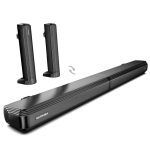Third-party controllers:
Third-party controllers are game controllers for the PlayStation 2 console that are manufactured by companies other than Sony. These controllers are often cheaper than the official Sony controllers, and are designed to provide an alternative to players who may not be satisfied with the official controller or who are looking for additional features and functionality. There were a wide variety of third-party controllers available for the PS2, ranging from simple variations on the DualShock 2 design to more elaborate and specialized controllers. These included arcade-style fight sticks, wireless controllers with built-in screens, and controllers designed for specific types of games.

There are many different types of third-party controllers available for the PlayStation 2 console, each with its own unique features and design. Some of the most popular types of third-party controllers include gamepads, steering wheels, arcade sticks, and dance mats.
differences: price
One of the most significant differences between third-party controllers and official Sony controllers is the price. Third-party controllers are often significantly cheaper than official controllers, making them a popular choice among budget-conscious gamers.
design and functionality
Another significant difference between third-party controllers and official controllers is the design and functionality. Third-party controllers often feature additional buttons, triggers, and other features that are not present on the official Sony controllers. This can provide players with greater control and flexibility when playing games.
design or color
Third-party controllers also often feature a different design or color scheme than the official Sony controllers, making them more customizable and visually appealing to some players.
advantages
One of the advantages of third-party controllers is their versatility. Many third-party controllers are designed to be compatible with a wide range of games, and can be used with both PlayStation 2 games and PC games. This makes them an essential tool for players who enjoy gaming on multiple platforms.
history
Third-party controllers have a long history in the gaming industry. They first became popular in the 1990s, with the release of the Nintendo Entertainment System and the Sega Genesis. Third-party controllers for these consoles often featured additional buttons and functionality, making them a popular choice among gamers.
The popularity of third-party controllers continued to grow with the release of new consoles, including the PlayStation 2. Third-party controllers for the PS2 controller became widely available, providing players with a cheaper and more customizable alternative to the official Sony controllers.
One of the advantages of third-party controllers is that they often provide additional functionality that is not present on the official Sony controllers. For example, third-party controllers for the PlayStation 2 often feature additional buttons and triggers, which can provide players with greater control and flexibility when playing games.
Third-party controllers also often feature a different design or color scheme than the official Sony controllers, making them more customizable and visually appealing to some players.
However, there are also some disadvantages to using third-party controllers. Because they are manufactured by companies other than Sony, there is no guarantee that they will be compatible with all games or that they will work properly with the console. Some third-party controllers may also be of lower quality than the official Sony controllers, and may not last as long or provide as reliable a performance.
conclusion
In conclusion, third-party controllers are a popular alternative to the official Sony controllers for the PlayStation 2 console. They offer a range of additional features and functionality, at a lower price point than the official controllers. However, they also come with some disadvantages, including potentially lower quality and compatibility issues. Ultimately, the choice of which controller to use will depend on the individual preferences and needs of the player.









